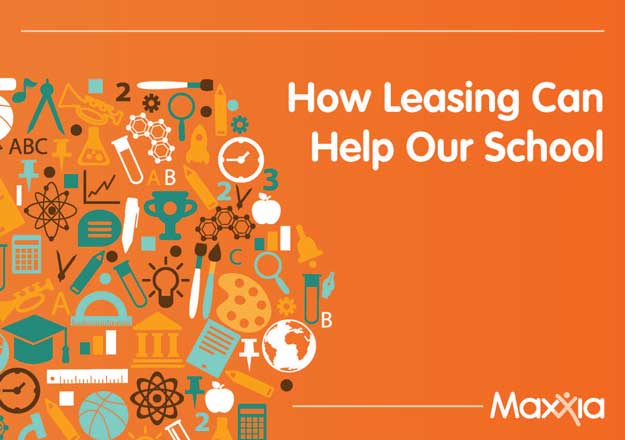[fusion_builder_container hundred_percent=”no” equal_height_columns=”no” menu_anchor=”” hide_on_mobile=”small-visibility,medium-visibility,large-visibility” class=”” id=”” background_color=”” background_image=”” background_position=”center center” background_repeat=”no-repeat” fade=”no” background_parallax=”none” parallax_speed=”0.3″ video_mp4=”” video_webm=”” video_ogv=”” video_url=”” video_aspect_ratio=”16:9″ video_loop=”yes” video_mute=”yes” overlay_color=”” video_preview_image=”” border_size=”” border_color=”” border_style=”solid” padding_top=”” padding_bottom=”” padding_left=”” padding_right=””][fusion_builder_row][fusion_builder_column type=”1_1″ layout=”1_1″ background_position=”left top” background_color=”” border_size=”” border_color=”” border_style=”solid” border_position=”all” spacing=”yes” background_image=”” background_repeat=”no-repeat” padding_top=”” padding_right=”” padding_bottom=”” padding_left=”” margin_top=”0px” margin_bottom=”0px” class=”” id=”” animation_type=”” animation_speed=”0.3″ animation_direction=”left” hide_on_mobile=”small-visibility,medium-visibility,large-visibility” center_content=”no” last=”no” min_height=”” hover_type=”none” link=””][fusion_text columns=”” column_min_width=”” column_spacing=”” rule_style=”default” rule_size=”” rule_color=”” hide_on_mobile=”small-visibility,medium-visibility,large-visibility” class=”” id=”” animation_type=”” animation_direction=”left” animation_speed=”0.3″ animation_offset=””]
Teacher workload, student outcomes and the need to close the gap between individuals in schools are all to be addressed through technology. The government released the EdTech strategy at the Schools and Academies Show in London in early 2019, calling the initiative Realising the Potential of Technology in Education. The Education Secretary set out plans, with a promise of £10 million in funding, aiming to raise the level of innovative practice in educational organisations across England.
The logic of the decision for the government is clear. Schools are under pressure and must prepare all students for an increasingly rapid rate of change and innovation. Technology companies are valuable to the UK economy, worth an estimated £170 million. Therefore, matching the demands of education and boosting an essential sector of the economy makes this a promising strategy for all.
But what does it mean for schools?
National policy meets teacher practice
The first and most important point to make to beleaguered school leaders and teachers is that they have probably got an EdTech strategy already. The national conversation about technology in schools has lagged behind practice in schools and colleges. As ministers come and go, it is difficult for governments to offer a long-term vision for education. This means that schools have innovated on their own, without the support of a national approach.
Ultimately, this means there will be funding to help schools innovate. It also suggests there will be more research and more debate on the value of technology in the classroom. This will help teachers and researchers begin to develop a pedagogy of outstanding practice and so improve outcomes for young people.
Ofsted will play a part in the strategy. The EdTech strategy will inform the new inspection framework. Greater value will be placed on the way technology is being used within organisations to improve teaching and learning.
Investment advice and interest
The EdTech strategy will also create links between industry and schools. The British Education Suppliers Association (BESA) will help schools to identify the right products when buying technology. Anyone who has worked in a school or college will know that a lot of money can be wasted on inappropriate or ineffective software and hardware. The LendEd service, supported by the Department for Education, will offer advice to schools and give them the chance to try educational software for free before they buy.
The hope is that this collaboration will stimulate interest in the technology sector. With a direct connection to educational organisations, the tech sector may seek to develop products that act as a solution for problems identified in schools. Private companies could attempt to address teacher workload issues, finding ways to automate marking, for instance. The tech sector may start to look at ways of offering tailored training to teachers and lecturers, or even finding ways of developing anti-cheat software, shutting down essay factories that reduce the quality of outcomes.
How it will begin
Although the vision of the strategy is admirable, schools will need more reassurance that the logistics of such a scheme have been well tested and honed. Therefore, there will be an EdTech50 Schools Project. The project will launch with a number of demonstrator schools and colleges and will be supported by Intel, Jisc and NetSupport. The Independent Schools Council and the Times Education Supplement will also collaborate with this project.
The EdTech50 Schools Project will find digital flagship schools who already demonstrate a high level of technical innovation. The schools will already be using technology to close the gap between the achievement of students, working to reduce teacher workload, as well as using technology to innovate the curriculum.
The hope is that the skill, expertise and lessons learned from these digital schools will help guide others. The leaders in these organisations have already shown much creativity and innovation in the application of a technological strategy. It is anticipated that others can learn from this and those who have already developed an educational strategy will receive much-deserved praise and publicity.
Iterative improvement
The Innovation Foundation Nesta is being given the task of being an ‘agile solution’ provider. This has a specific meaning in technological development. Software is often released to the consumer before it is a fully finished product. Version 1 or a Beta version is released. Consumers use the product and offer feedback. This feedback is then reflected on by developers and technicians and the next version – the updated software – will have resolved problems or improved the experience for the customer. Agile development groups work in iterations, short bursts of development that are informed by an intense level of reflection and learning.
This agile approach makes the schools as necessary in the collaboration as the tech companies. The schools will become an intrinsic component in the development of the best educational software. Real-life use of the software while it is in development means that the product can be tailored to the genuine needs of the classroom. Using the flagship schools as test-beds for new products means that the conversation goes both ways and works to assist the development of both sectors.
EdTech in the long-term
The EdTech strategy is more than a promising beginning. The long-term vision is that the Education Foundation will work to develop the confidence of teachers, helping the plan to roll out across the country. There is an acceptance that there will be a need for informal and formal training, online and in-person sessions for teachers. It is the confidence of the staff in situ that will make this EdTech strategy a success.
The hope is that there will be some priority given to assistive technology. Students with dyslexia and ASD (Autistic Spectrum Disorder) are well-known to benefit from the use of IT. Therefore, in the long-term, the hope is that education and technology experts will collaborate and offer suggestions to the government on how to close the gap in the educational experience for these students. It is accepted that technology can profoundly support some students open channels of communication and give them the independence to learn as others do.
Rolling out the power of the Janet Network is another long-term aspiration of the EdTech strategy. Janet is a high-speed network designed for the UK research and education community. It offers a reliable network connection, with high bandwidth and high speeds. This should help schools support the innovation that will emerge from other parts of the strategy.
A new EdTech Leadership group will be convened to bring together educators with those within the technology sector. This leadership group is committed to determining the future use of technology, and so defining best practice in the education sector. The leadership group aims to ensure that the strategy follows a series of sensible steps that make its implementation helpful and supportive to the work of schools, teachers and students.
Practical help
If your school is lacking in IT equipment or other technology and you’re struggling to update and upgrade, while trying to manage on diminishing budgets, Maxxia can help. We can assist you to lease state-of-the-art IT assets without committing large amounts of capital. Contact us to talk about your school’s needs.
[/fusion_text][/fusion_builder_column][/fusion_builder_row][/fusion_builder_container]








